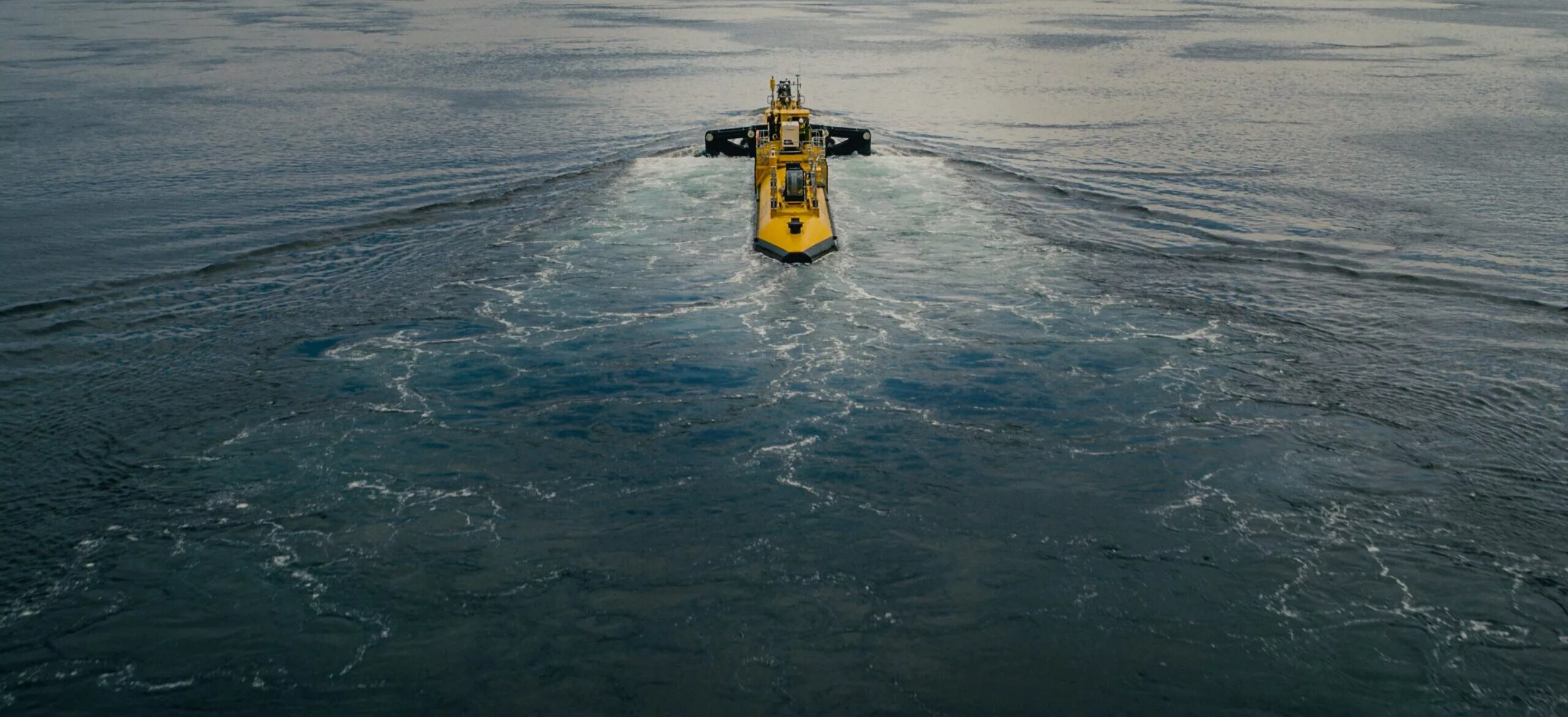Following the official launch of "the world's most powerful tidal turbine" in April, Orbital Marine Power has announced that the O2 has started grid-connected power generation at the European Marine Energy Centre in Orkney.
After being manufactured in Dundee, Scotland, the floating turbine was towed up to Orkney in June, before being anchored in the fast-moving waters of the Fall of Warness. Orbital's first commercial turbine is now connected to the local onshore electricity network by an undersea cable, and has begun operation.
The O2 turbine is moored to the seabed at four points, and has a 1-MW turbine nacelle on either side of its 74-m (242-ft)-long hull, with 10-m (32-ft) blades capturing flowing tidal energy over a swept area of more than 600 m2.
The 2-MW offshore unit is expected to have an operational life of 15 years, and Orbital reckons that it has the capacity to meet the annual electricity needs of around 2,000 homes, though it has been tasked to provide power to the European Marine Energy Centre's onshore electrolyzer for the generation of green hydrogen.
"This is a major milestone for the O2 and I would like to commend the whole team at Orbital and our supply chain for delivering this pioneering renewable energy project safely and successfully," said Orbital CEO, Andrew Scott. "Our vision is that this project is the trigger to the harnessing of tidal stream resources around the world to play a role in tackling climate change whilst creating a new, low-carbon industrial sector."
Construction of the O2 turbine was supported by ethical investment platforms and the Scottish Government, while the wider project received funding from the EU's Horizon 2020 program and the European Regional Development Fund. The company is now planning to scale up operations with multi-MW installations, with costs expected to drop significantly as the technology is rolled out.
Source: Orbital Marine Power




